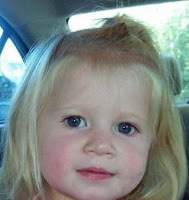When you have worked on family history for as long as I have, you are bound to run into intriguing mysteries, some solvable, some elusive, and some downright maddening. Here's just a few I have solved or am still facing.
UNSOLVED
My Mom told me about the mysterious case of
Tom Brosnahan, her father's cousin. He was in college at a Catholic seminary, and, suffering from intense overwork, came home for some R and R. He stopped by to visit Mom's family in Massachusetts, and after that was never seen again. Mom could barely remember this; she was born in 1926, so a likely time period for the disappearance could have been about 1930-ish. To this day no one knows what happened to him, despite the investigations done at the time. The police even dragged the river looking for a body. I have done some fishing, but without actually visiting Massachusetts and devoting days to searching police records and other public documents, it will remain a dead-end. As much as I yearn to solve the case of disappearing Tom, it would be a better project for someone who lives in the area and wouldn't have to rack up hotel bills and use vacation time.
UNSOLVED
Michael Toomey, my great-great-great-grandfather, came to Brattleboro Vermont from Ireland about 1848, and likely worked on the railroad there (no direct evidence for that, yet). His gravestone says he died April 9, 1870. Gravestone information is notoriously in error, but supporting evidence for that death date is in the town's tax records for that year, dated April 15, 1870. Michael's name is entered, then crossed out with "dead" added next to his name. But there is no death record for him found in Vermont at any time. I have checked all of the surrounding states and found no death record for him. Such a record would give me his occupation and his cause of death, about which I'm very curious.
SOLVED
George, John, Andrew, Michael Bubnash
My Baba told me that my Grandpa's father,
Paul Bubnash, died when Grandpa was a baby (he was born 1891). Yet some cousins in Montana showed me a photo taken circa 1900 of four of the Bubnash brothers, and they were sure Paul was the one on the left. This info was passed down to them from the previous generation. My instincts trusted Baba; she was very good on details. I was sure Paul Bubnash couldn't have appeared in a 1900 photograph. Finally, about 1996 the parish records of Valaskovce, Austria-Hungary, became available on microfilm. I dove right in looking first for Paul's death. And yes, he died at age 28,
before my Grandpa was even born. Two months before my Grandpa, his second son, was born, in fact. And who was the man on the left in the photo? My Slovak relatives tell me it's the oldest brother, named George. And that makes perfect sense.
SOLVED
My Baba also told me the circumstances of her brother
Michael Csornej-Maczko's death. Briefly, Michael was living in their native village of Nemet Poruba during the war. The Germans marched through and forced the residents to flee or be shot. They fled to the mountains on the Polish border. When residents returned to the village they found it burned to the ground. Michael lit a fire for warmth, in what remained of the chimney. The Germans had planted a bomb in the shaft, it exploded, and Michael was killed.
o which war was this, I asked Baba. She just couldn't remember. She was near 100 years of age, and some details of things that had happened to other people had naturally faded from her memory.
In 2002, we visited Dukla Pass in Slovakia, the site of "the biggest battle you never heard of." Over 100,000 people were killed when the retreating Germans, pursued by the Russian advance, made a last stand at Dukla Pass on the border between Poland and Slovakia, from October--December 1944. Learning what happened at Dukla Pass was the key to solving the mystery of when Michael died. As I studied military maps of battles that took place in Eastern Slovakia, and read the rare accounts of people's experiences, everything fit for Michael's death
occurring in December 1944 or January 1945, and definitely
not during World War One. The pattern of the German retreat near the end of World War Two was repeated all along the front: banish or kill the villagers, burn the village, leave behind murder and mayhem. Baba knew Michael's death occurred in winter. Many innocents were killed during the fighting at Dukla Pass.
SOLVED
In the mid-70s I located a death record for my great-great-grandfather,
Cornelius O'Sullivan. He was 51, died in Brattleboro Vermont, and his death was listed as accidental. I was able to get someone in Vermont to check an the June 1871
Vermont Phoenix newspaper for a report on the accident. A terse couple of lines in the paper explained that Cornelius was "run over by a hand-car just above the West River Bridge." He lingered five days until his death. That's it.
Fast forward years later. Curiosity about what happened had been eating at me. I was in Brattleboro Vermont and found bound copies of an obscure short-lived newspaper called The Vermont Record and Farmer. This one shed more light. Poor Cornelius was one of a group split between two handcars, who rode up and down the track checking its condition. He was on the lead car. It hit an obstacle large enough to cause a lurch; he fell onto the track and was run over by the rear car. His injuries were dreadful. About the same time, I discovered a handwritten piece of paper in an old book that had belonged to Cornelius's daughter, my great-grandmother, Mary. On it was written a list of terrible bodily trauma without any reference to whose injuries were described. I am sure they were his.
Mary Sullivan, daughter of Cornelius O'Sullivan




































.jpg)












